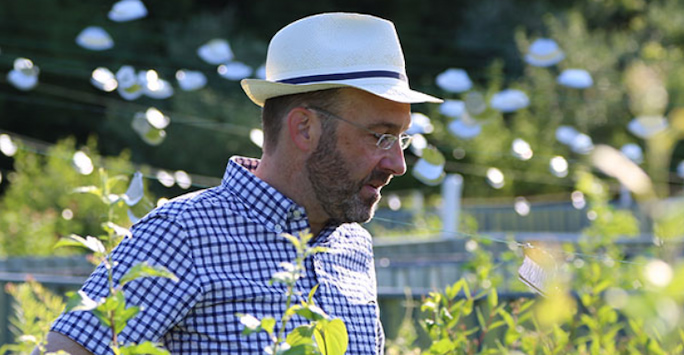
As we continue our My First Paper initiative across the Faculty, we will be showcasing research and their researchers across the board engaging with the future generations of researchers. Our next researcher from IVES is Mark Viney, telling us all about his first research paper.
Your name and your area of research
I'm Mark Viney, a Professor of Zoology and Head of the Department of Evolution, Ecology and Behaviour. I study the basic biology of parasitic nematodes, with a particular interest in the biology of the parasitic nematode Strongyloides. With Strongyloides I am interested in its genomic adaptations to parasitism and its population genomics. I also work on the immune responses that wild animals make, having got to this because this the environment in which parasites live and evolve – and the nematode Strongyloides makes developmental decisions in its life cycle based on the host immune responses.
What was the title of your first paper and who was it submitted to?
Hollister, W.S., Canning, E.U. & Viney, M.E. (1989) Prevalence of antibodies to Encephalitozoon cuniculi in stray dogs as determined by an ELISA. Veterinary Record, 124, 332-336.
How would you explain what this paper was about to your grandparents?
We studied dogs at Battersea Dogs Home (https://www.battersea.org.uk) and found that they were very commonly infected with a micro-parasite called Encephalitozoon cuniculi. This parasite was known to infect does and a wide range of animals, but what we discovered was that it really was very common in pet dogs.
What was the most significant thing for you about that paper?
At the time we did this work there was quite a worry about E. cuniculi because it was an opportunistic infection in people with HIV/AIDS – and of course we were doing this work when the UK HIV/AIDS epidemic was breaking. Here the concern was that if it was common in pets then this was a risk to those with HIV/AIDS. Our work was significant because we found it to be quite prevalent in pet dogs.
What advice would you give to others about submitting their first paper?
Two pieces of advice. One, enjoy the science you’re doing – I loved this work – but always keep in mind the bigger picture of why you are doing the work, and then the paper writes itself. Two, that you are always a part of a team. For this work there were my two co-authors, but also a much wider group of people including loads of people at the dogs home, lab technicians, academic staff, post-docs etc. at my college – and when you’re working in a team that you get as least as much back as you put in.